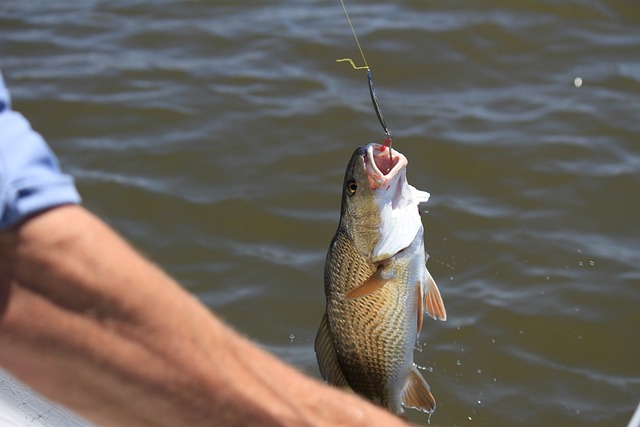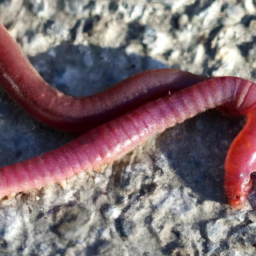In this article, you’ll learn some useful tips on how to handle a situation when a fish swallows the hook. We’ll discuss the dos and don’ts, as well as some techniques to safely remove the hook without harming the fish. By the end of this article, you’ll have a better understanding of how to handle such situations with care and ensure the well-being of the fish.
Methods to Handle a Fish That Swallowed the Hook
When you’re out on the water enjoying a day of fishing, it’s not uncommon for a fish to swallow the hook. While this can be concerning, there are several methods you can employ to handle the situation appropriately. In this article, we will discuss the different steps you should take to assess the situation, understand the risks associated with a swallowed hook, and decide on the best course of action.
Assessing the Situation
The first step in dealing with a fish that swallowed the hook is to assess the situation. By determining how deeply the hook is lodged, examining the size and species of the fish, and observing the fish’s behavior, you can gain valuable insight into the best approach to take.
Determining if the Hook is Deeply Lodged
Before deciding on the appropriate action, it’s essential to determine whether the hook is deeply lodged in the fish or if it’s possible to remove it without causing further harm. If the hook is lodged in the gills or esophagus, it may be best to seek professional assistance or consult local fishing regulations.
Examining the Size and Species of the Fish
The size and species of the fish can also influence your decision-making process. Larger fish with thicker skin and stronger teeth may require additional caution and specialized tools for hook removal. Understanding the specific characteristics of the fish can guide you in choosing the best method for handling the situation.
Taking Note of the Fish’s Behavior
Observing the behavior of the fish can provide valuable information about its overall health and stress level. If the fish is struggling or displaying signs of distress, it’s crucial to act quickly and carefully to minimize harm. On the other hand, if the fish appears calm and cooperative, you may have more options for safely removing the hook.
Understanding the Risks
Once you have assessed the situation, it’s important to understand the risks involved in dealing with a fish that swallowed the hook. By considering potential injuries to the fish, the risk of hook internalization, and the potential transmission of diseases, you can make informed decisions about the best course of action.
Potential Injuries to the Fish
Removing a hook that has been swallowed deeply can cause additional injuries to the fish, such as puncturing vital organs or causing internal bleeding. It’s important to weigh the potential harm caused by removing the hook against the benefit of releasing the fish back into the water.
Risk of Hook Internalization
If the hook cannot be safely removed without causing harm or stress to the fish, leaving it in place may be the best option. However, there is a risk of the hook becoming internalized over time. This can lead to long-term complications or even death for the fish. Understanding this risk can help you make an informed decision on how to proceed.
Potential Transmission of Diseases
Fish can carry various diseases and parasites that can be transmitted to humans or other fish. By handling a fish that has swallowed the hook, you may be putting yourself and other fish at risk. It’s essential to take precautions to prevent disease transmission, such as disinfecting fishing gear and monitoring the fish for signs of infection.
Deciding on the Best Course of Action
After assessing the situation and understanding the risks, it’s time to decide on the best course of action for dealing with a fish that swallowed the hook. This decision will depend on factors such as local fishing regulations, your own fishing ethics, and your ability to handle the situation safely.
Considering Catch and Release
If the fish is in good overall condition and the hook can be safely removed, catch and release may be the best option. This allows the fish to continue its natural life cycle while minimizing the risk of injury or stress.
Weighing the Benefits of Removing the Hook
If the hook is deeply lodged or removing it would cause excessive harm to the fish, leaving the hook in place may be the most humane option. This would involve cutting the line as close to the hook as possible to give the fish the best chance of survival.
Consulting Local Fishing Regulations
Before making any decisions, it’s important to consult local fishing regulations. These regulations may specify guidelines for hook removal or provide insight into the best practices for dealing with a fish that swallowed the hook. Following these guidelines ensures that you are not only acting ethically but also legally.
Guidelines for Catch and Release
If you decide that catch and release is the best course of action, there are several guidelines you should follow to minimize harm to the fish and maximize its chances of survival.
Minimizing Handling Time
The longer a fish is out of the water, the greater the risk of injury or stress. When handling a fish, keep the time out of the water to an absolute minimum. Use a rubber-coated net or wet your hands before touching the fish to reduce damage to its scales and protective skin mucus.
Using Proper Fishing Gear
Using appropriate fishing gear can greatly increase the chances of a safe hook removal. Barbless hooks are designed to be easily removed and can significantly reduce the risk of injury to the fish. Additionally, using the right size and type of fishing line can minimize the risk of deep hook sets.
Removing the Hook Safely
If the hook is lodged in the fish’s mouth or throat and can be safely removed, there are a few steps you can take to ensure it’s done correctly. Use tools like pliers or forceps to grip the hook firmly and minimize any potential trauma. Be mindful of the hook’s position, and apply gentle pressure while twisting and pulling the hook out in the same direction it went in.
Removing the Hook Safely
In some cases, the hook may be difficult to remove, or removing it may pose too great a risk to the fish. If you find yourself in this situation, it’s crucial to take precautions to minimize harm and maximize the fish’s chances of survival.
Using Tools like Pliers or Forceps
If you decide to attempt hook removal, using tools like pliers or forceps can provide a better grip and minimize unnecessary handling of the fish. Make sure the tools are clean and disinfected before use to reduce the risk of infection.
Being Mindful of the Hook’s Position
When removing a hook, it’s essential to be mindful of its position and any potential obstructions. Twisting or pulling the hook in the wrong direction can cause further damage to the fish’s mouth or throat. Take your time, and gently work the hook free while ensuring minimal harm to the fish.
Applying Gentle Pressure
If the hook is firmly lodged and cannot be easily removed, applying gentle, steady pressure may help dislodge it. But it’s crucial to exercise caution and avoid excessive force, as this can cause further injury or stress to the fish. If the hook still cannot be removed, cutting the line as close to the hook as possible is the safest option.
Taking Precautions for Hook Internalization
If leaving the hook in place is the best option, there are precautions you can take to minimize the risk of internalization and long-term complications for the fish.
Understanding the Risks
Leaving a hook in a fish comes with inherent risks, including internal damage, infection, and impaired feeding abilities. Understanding these risks can help you make an informed decision on how to proceed and monitor the fish’s health.
Using Barbless Hooks
Using barbless hooks whenever possible can significantly reduce the risk of hook internalization. Barbless hooks are designed to make hook removal easier and are less likely to cause lasting harm to the fish.
Seeking Veterinary Assistance
In extreme cases or if you are unsure of the best course of action, seeking veterinary assistance is always an option. Veterinarians specializing in fish health can provide expert guidance and may be able to remove the hook safely if necessary.
Minimizing Injuries to the Fish
Whether you choose to remove the hook or leave it in place, there are steps you can take to minimize injuries to the fish and ensure its well-being.
Avoiding Excessive Force
When handling a fish, it’s crucial to avoid using excessive force. Jerking or pulling on the fish can cause it unnecessary stress and lead to injuries. Instead, handle the fish gently and provide support to its body to reduce the risk of damage.
Handling the Fish with Wet Hands
Wet hands help to reduce the friction between your skin and the fish, minimizing the risk of damage to its scales and protective mucus. Wetting your hands before handling the fish can help maintain its natural defenses and overall health.
Supporting the Fish’s Body Properly
Properly supporting the fish’s body is essential to prevent injuries or harm. Cradling the fish with both hands, supporting its head and body, helps distribute its weight evenly and reduces strain on its internal organs.
Preventing Disease Transmission
Fish can carry various diseases and parasites that can be transmitted to humans or other fish. Taking precautions to prevent disease transmission is not only important for your own safety but also for the well-being of the fish.
Disinfecting Fishing Gear
Regularly disinfecting your fishing gear, such as hooks, lines, and nets, with a mild bleach solution or specialized disinfectant can help minimize the risk of disease transmission. Clean gear reduces the chances of infecting other fish or spreading diseases to other bodies of water.
Avoiding Fishing in Areas with Known Diseases
Being aware of areas with known fish diseases or outbreaks can help you avoid potential risks. Research local fisheries and conservation organizations for information on disease outbreaks or areas to avoid when fishing.
Monitoring the Fish for Signs of Infection
After removing a hook or releasing a fish back into the water, it’s important to monitor the fish for signs of infection. Look for redness, swelling, or unusual behavior that may indicate a health issue. If you observe any signs of infection, consult a veterinarian specializing in fish health.
Conclusion
When faced with a fish that has swallowed the hook, it’s important to prioritize the well-being of the fish and make informed decisions based on proper angling practices. By assessing the situation, understanding the associated risks, and deciding on the best course of action, you can handle the situation in a way that minimizes harm to the fish and respects fishing ethics. Remember to continue educating yourself on proper fishing practices to contribute to the conservation and sustainability of fish populations for future generations.


